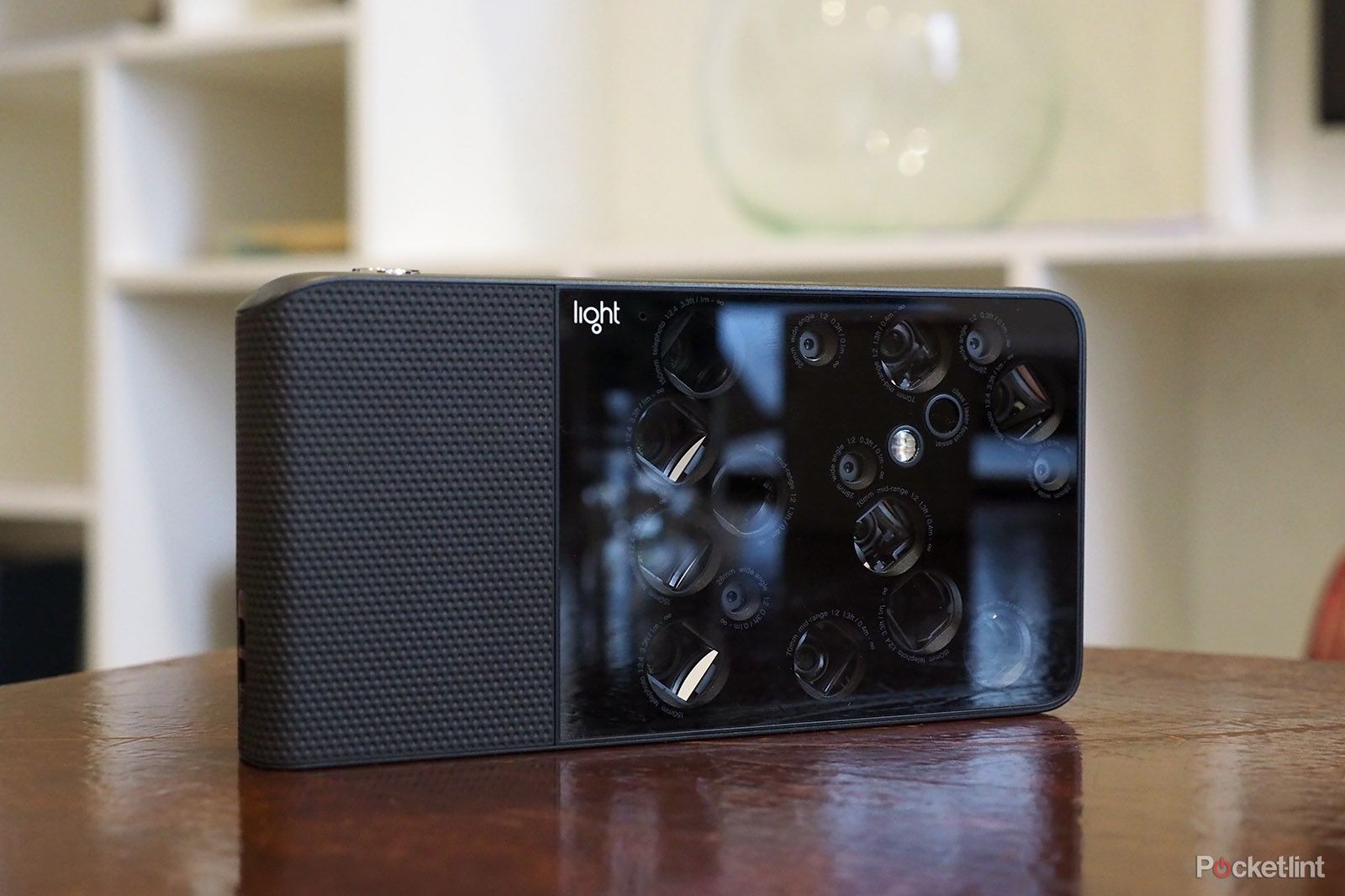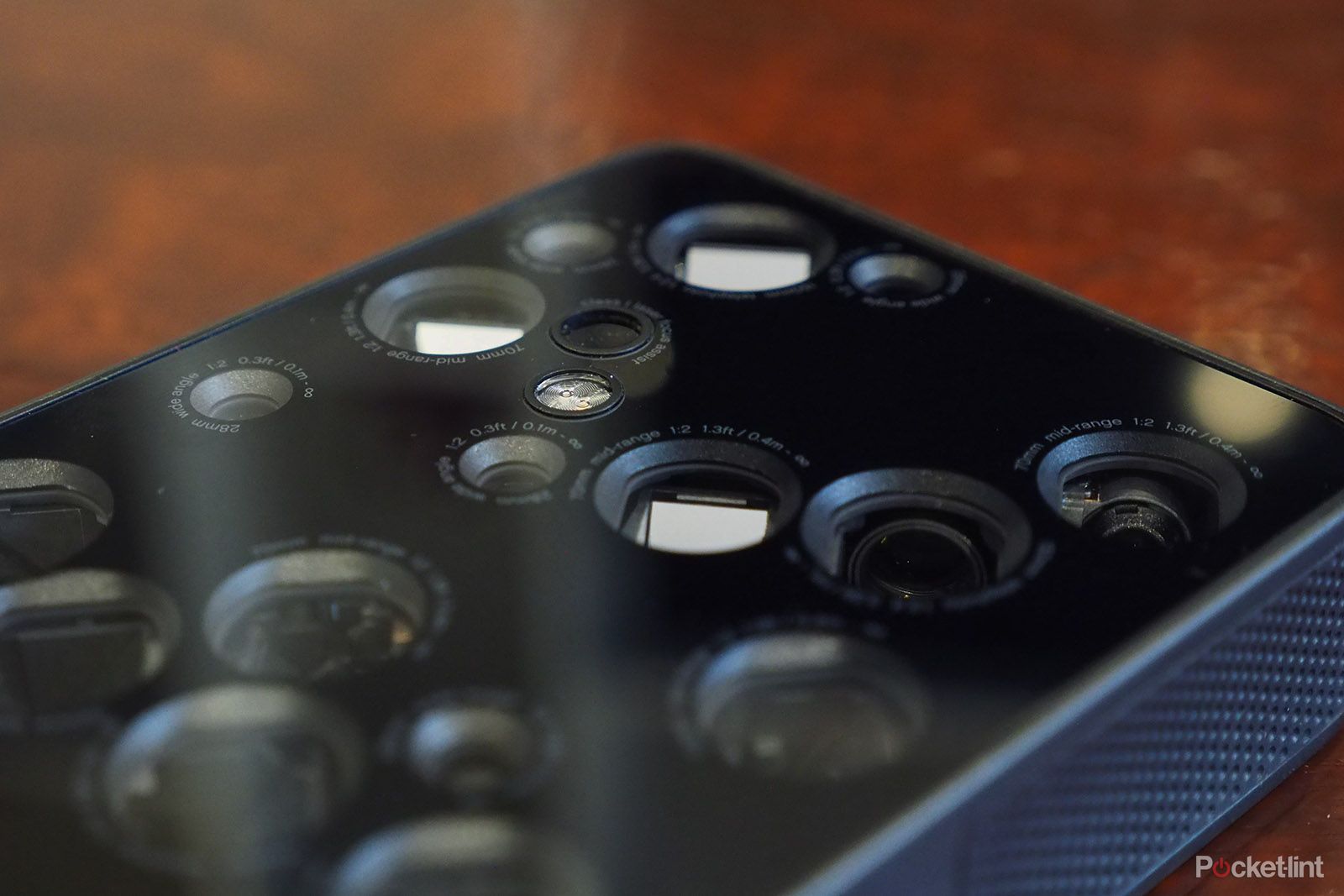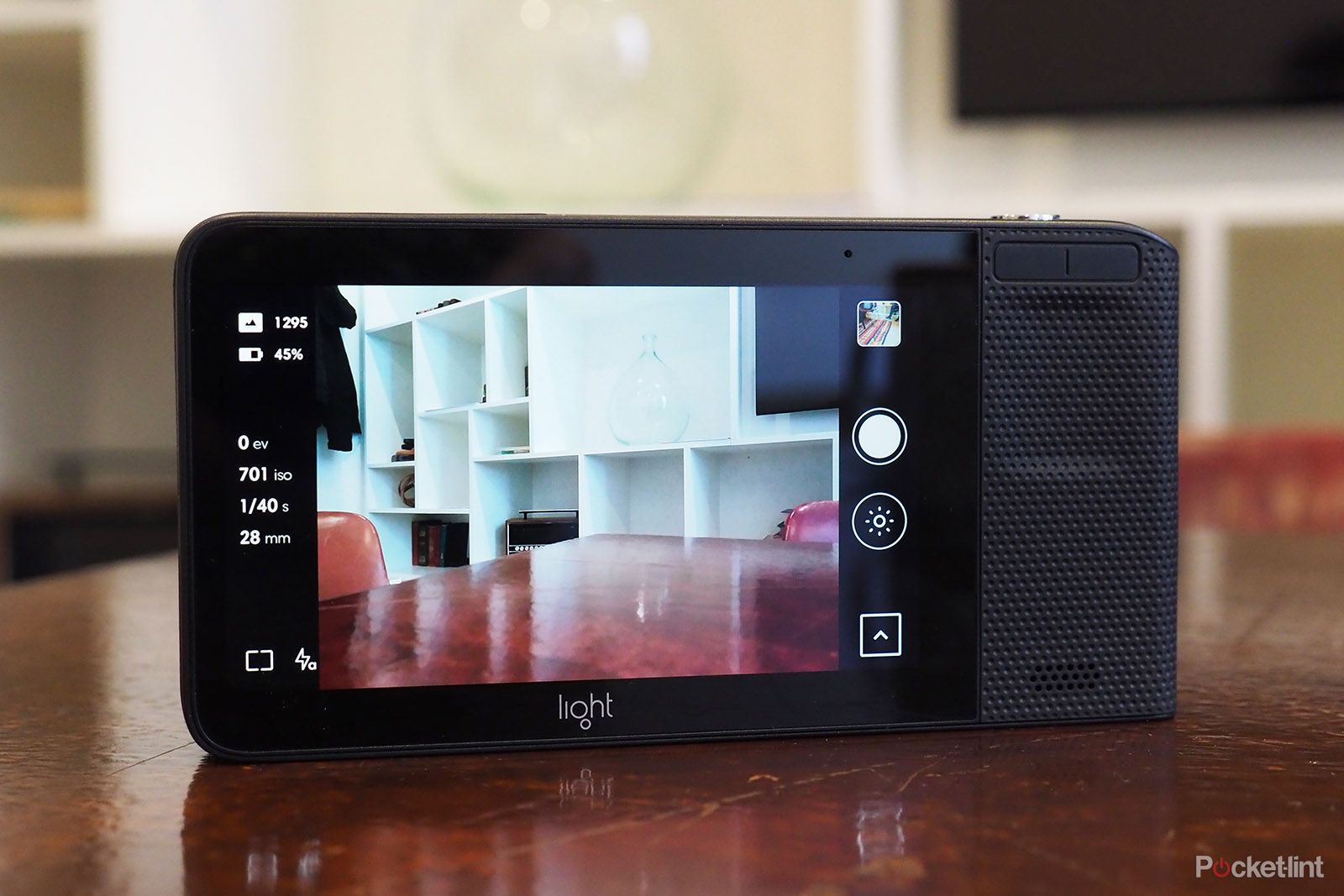Don't fret, your eyes haven't crossed; you're not looking at a Photoshopped image of a smartphone from the future. Nope, you're looking at the Light L16: a 16-in-one camera that is, well, every bit as barmy as it looks.
Our quick take

Light L16
| FOR | AGAINST |
|---|---|
|
|
|
So what exactly is it? The L16's premise is to offer high-resolution images (up to 81 megapixels; typically it's 52MP) without the need for a zoom lens that physically protrudes and extends. The body - which is like a giant phone-meets-camera mixture - has no external moving parts and, therefore, it's smaller than a DSLR equivalent.
But it operates nothing like a DSLR camera. Each of its 16 lenses - if you like the geeky detail, there are five 28mm f/2.0 equivalents, five 70mm f/2.0 equivalents, and six 150mm f/2.2 equivalents - is mated to a small-scale sensor, like what you would find in a smartphone. By combining the capture and data from each it's possible to create a higher-resolution image than from any one sensor.
Opposing lenses of the same focal length can also be used to derive a depth map. This is a critical to the way the L16 functions: it shoots wide open (i.e. there's no aperture control), opting to let you make focus adjustments post capture using the bundled Lumen software. You can chose the focus plane and how blurred you want the background and foreground to be (best known as making aperture adjustments, in photo speak (between software-rendered f/2.0 and f/15.2)) and export images to share as you please. But not being able to do that in camera seems like an oddity.
If depth mapping sounds familiar, it's because that's what almost every smartphone camera manufacturer is pushing at the moment, albeit without the huge number of lenses. Think Apple "Portrait" mode, or Huawei & Leica's partnership.
Which sets alarms bells ringing. We've long been critical of multiple images stitched together and software-derived blur and its inefficiency to 100 per cent accurately define edges and true depth. So while Light may do some of this better than its smartphone competitors, is that quite enough?
We've got to hand it to Light for sticking its neck out and thinking differently. The L16 is as fascinating as it is unnecessary. Where we can see more genuine application of this kind of technology in the future, however, is in future smartphone devices. But in a pared down way.
Especially as the L16, which is now available in the UK, costs a huge £1,850 (it's discounted to £1,295 until the end of March 2018 as an introductory promotion). Light by name, but not light on the wallet, eh?


